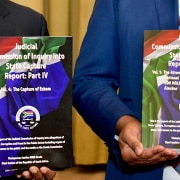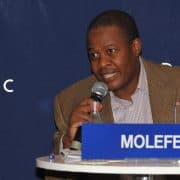|
Getting your Trinity Audio player ready...
|
South Africans can be forgiven for sometimes not being able to keep up with events, especially in the public sphere. Developments happen in rapid succession and it can be difficult to keep a clear picture in mind or get a good idea of the magnitude of events.
In the case of the Eskom saga, which has been dragging on since 2015 but has recently again become a major talking point, we’ve put together an overview of the major developments and revelations, based on information that is in the public domain.
2 July 2015
Dentons South Africa investigated the status of the business and challenges experienced by Eskom, in terms of a resolution passed by the Board of Eskom Holdings on 11 March 2015. Because of the serious nature of the allegations against Eskom, the Financial Mail released the unredacted Dentons report to the public.
26 November 2015
PwC was appointed to conduct a review of the coal quality management of certain coal suppliers and Eskom’s contracted laboratories following allegations discussed in a “clarification meeting” held in September 2015.
The report was tabled in Parliament in May 2017.
12 April 2016
Treasury embarked on a report, titled Verification of Compliance with SCM Framework – Appointment of Tegeta Exploration and Resources. The report, which was leaked in mid-April 2017, alleged that Eskom had given Tegeta preferential treatment.
14 October 2016
Then Public Protector, Advocate Thuli Madonsela, released the State of Capture report, which refers extensively to Brian Molefe. The report found that the Guptas, with Eskom’s assistance, caused the Optimum coal mine to go out of business. Then CEO of Eskom, Molefe was found to be in touch with the Guptas on a regular basis. In fact, Molefe’s relationship with the Guptas featured as one of the report’s main findings while Ajay Gupta admitted to the Public Protector that Molefe was a good friend, often visiting him at his Saxonwold home.
11 November 2016
Brian Molefe resigned as Eskom CEO, releasing a statement to this effect. His resignation was confirmed by Eskom, which noted that he was voluntarily stepping down in the interests of good governance – a position echoed by Molefe. The minister of public enterprises, Lynne Brown, also acknowledged and accepted Molefe’s resignation.
Watch the Eskom press conference.
23 February 2017
Molefe started his new career as a Member of Parliament for the ANC, after receiving backing from the North West branch of the party.
5 March 2017
Eskom advertised the role of CEO in the Business Times, four months after Molefe’s resignation. The advert called for a candidate with leadership experience and political know-how, who would “pro-actively shape the future of Eskom.”
24 April 2017
Lynne Brown rejected the proposed R30-million pension payout to Molefe. In a statement, Brown said: “I have considered the Eskom Board’s reasoning in formulating the proposed pension payout and cannot support it.”
26 April 2017
Brown granted the Eskom board more time to consider the pension payout. “The Board has asked for more time to finalise their internal process and in the interest of fairness, I have acceded to it,” she said in a statement.
12 May 2017
Brown confirmed Molefe’s return as CEO to Eskom. In a statement , she said: “I believe that Eskom will benefit from the return to the helm of the man primarily responsible for the company’s turnaround in 2015/2016.” This despite the fact that Molefe, in his own words, was stepping down in the interests of good governance. However, Brown added that she was satisfied with the re-evaluation of Molefe’s position.
12 May 2017
The ANC condemned the decision to reinstate Molefe as “insensitive and reckless,” going as far as to order the public enterprises minister to revoke his restoration at Eskom.
12 May 2017
Financial Mail reported that Eskom had changed its stance on Molefe’s leaving and was now describing it as “early retirement”.
12 May 2017
Corruption Watch released a statement expressing its outrage at the “preposterous decision” to reinstate Molefe.
15 May 2017
Molefe was welcomed back at the parastatal amidst singing and dancing.
15 May 2017
The DA filed an urgent application in the North Gauteng High Court opposing Molefe’s reinstatement and asking for the court to review and set aside his reappointment.
17 May 2017
Eskom announced that Molefe had, in fact, been retrenched.
22 May 2017
Molefe and Brown filed affidavits, relating to the DA’s High Court application, in which they stated that he had all along been on unpaid leave, and that as he had not actually left his employment, he was obliged to return to work at Eskom.
22 May 2017
Brown was grilled in Parliament by former finance minister Pravin Gordhan and the Economic Freedom Fighters’ Floyd Shivambu, in an appearance before the committee on public enterprises. Shivambu logically noted that after Molefe’s resignation, the position of Eskom CEO was advertised and therefore he could not have been on leave.
22 May 2017
Brown told the parliamentary committee that she was withdrawing opposition to the DA’s application.
23 May 2017
Molefe, who had once been the CEO of the Public Investment Corporation – an entity that is responsible, among others, for investing the South African Government Employees Pension Fund – said in his affidavit that he and Eskom had mistakenly believed that he was eligible for early retirement when he left at the end of 2016.








